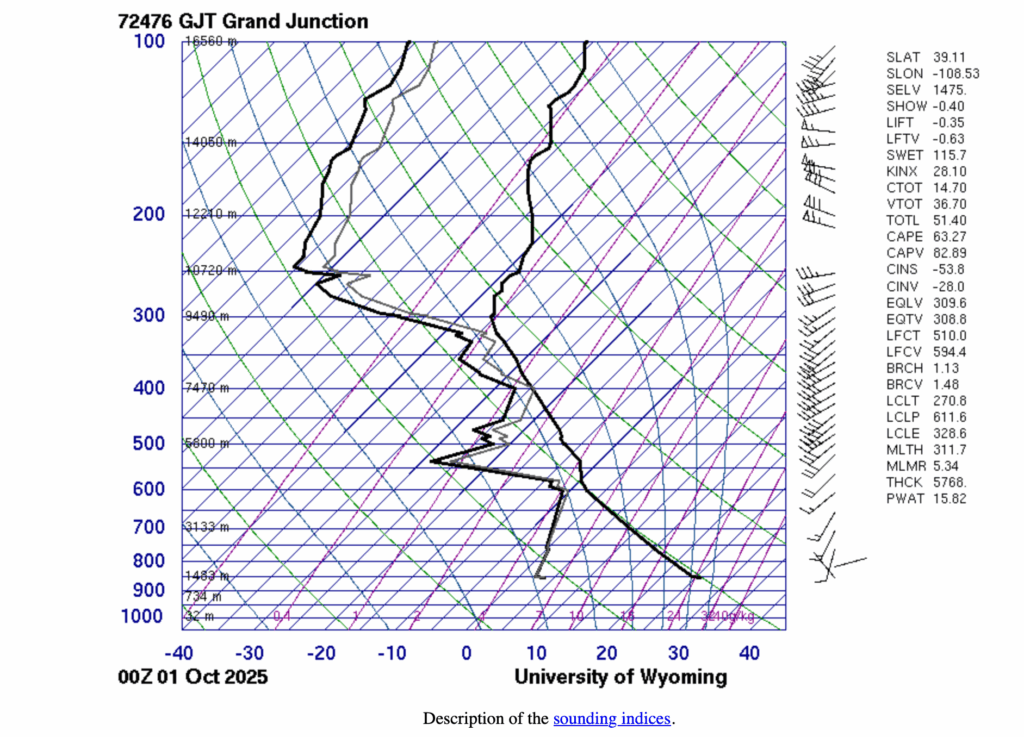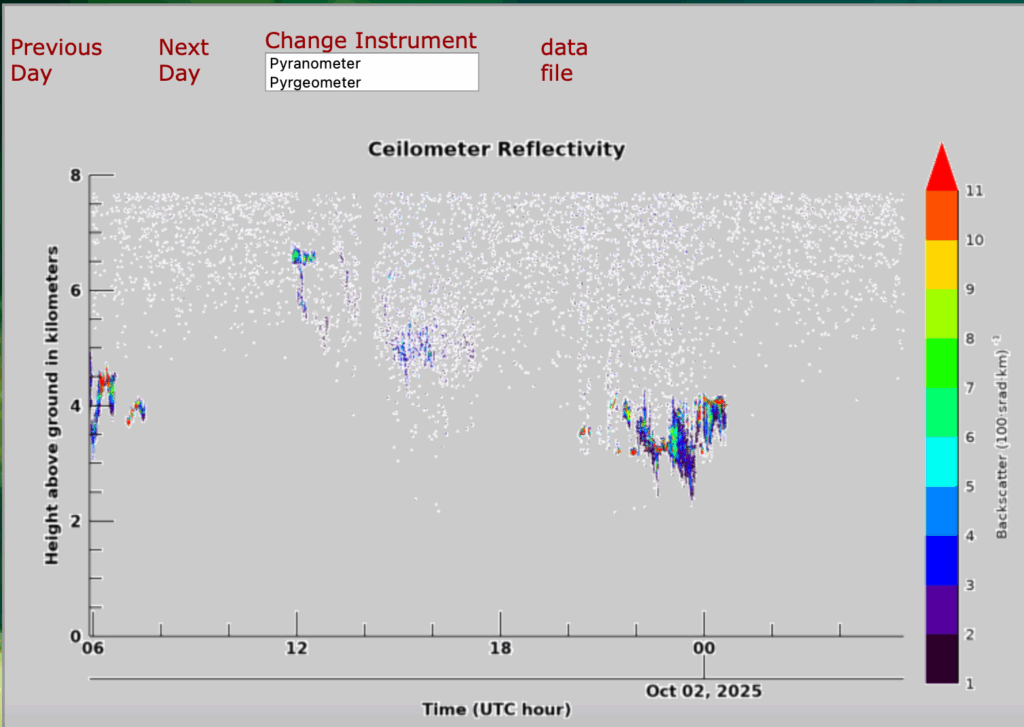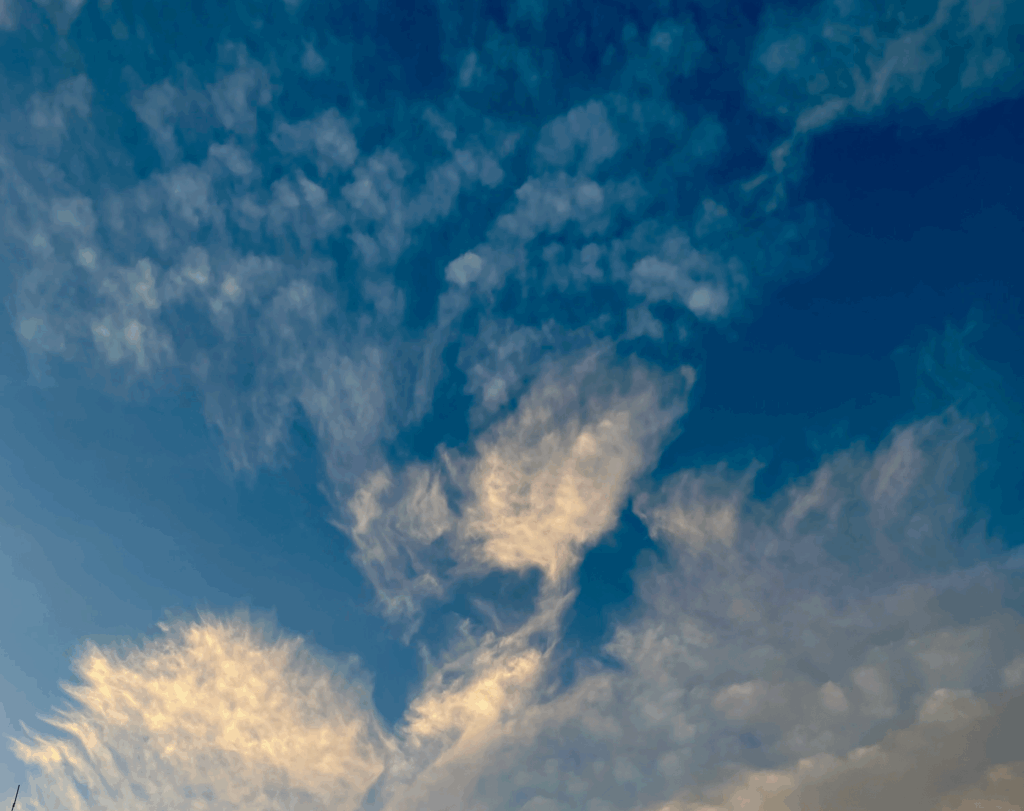
The clouds depicted are likely cirrus floccus and cirrocumulus. The environment was stable.
Cirrus Floccus and Cirrocumulus Clouds in Boulder, Colorado

Cooper Wyrick
Clouds First
MCEN 4151-001
Cirrus Floccus and Cirrocumulus
October 1st, 2025 7:41 a.m.
Folsom Field, Boulder, Colorado
This image was taken for the Clouds First assignment in MCEN 4151. The purpose of the assignment was to observe and photograph an interesting atmospheric phenomenon, focusing on the physics of cloud formation. My intent for this image was to capture clouds that looked visually striking and conveyed a sense of motion and texture. I wasn’t targeting a specific type of cloud at first; I just wanted to capture something that stood out. After two sunrise photograph sessions one week apart from each other, I took this photograph when the sky displayed cirrus floccus and cirrocumulus clouds.
The photograph was taken at Folsom Field in Boulder, Colorado on October 1st, 2025, at 7:41 a.m. The image was captured facing southeast with the phone camera angled 30 degrees above the horizon. The lighting at this time of day provided a yellow and orange hue that enhanced the texture of the cloud formations.
The image shows cirrus floccus and cirrocumulus clouds. The rest of the sky appeared to have stable conditions and no active frontal forcing. Weather on the previous day looked similar, and there was zero precipitation in Boulder on October 1, 2025 suggesting no moist systems nearby. At the time the image was taken, winds aloft reached 3 mph (“Boulder, Co…”). This can be seen in the streaked texture and rippling in the cloud field. The nearest Skew-T diagram from Grand Junction (Sounding Map) displays an overall stable profile (Figure 1).

Figure 1: Skew T Diagram
These clouds were 7 km above ground level (Skywatch Observatory) , which compliments a visual estimate of the clouds’ elevation (Figure 2).

Figure 2: Ceilometer Data October 1, 2025
The photograph was taken using an iPhone SE (3rd generation) digital camera, with a focal length of 3.99 mm, an aperture of f/1.8, and a shutter speed of 1/121 s. The ISO was 25. The original image resolution was 3024 × 4032 pixels (Figure 3), and the final cropped version measures 2989 × 2368 pixels. The estimated field of view is approximately 5 km × 5 km, with the clouds located around 7 km from the lens. Lighting conditions were natural daylight from the rising sun, so the automatic exposure settings of the iPhone provided a clear image without manual ISO adjustment. Post-processing was performed using GIMP, where the image was cropped to focus on the main cloud formation, and the contrast was increased to better highlight cloud boundaries and texture.

Figure 3: Original Image
This image portrays the dynamics of high-altitude clouds shaped by winds. The cirrus floccus and cirrocumulus formations display the fluid physics of the atmosphere, how shear and air currents can create textured cloud patterns. I really like the cloud formation and the golden lighting from the sun, which adds depth and dimension. However, a possible improvement would be photographing the scene with a Nikon camera, as a sharper focus might have added more detail. The fluid dynamics are represented well, since the directional rippling of the clouds shows wind effects. This image leaves me wondering about the exact wind speeds and shear gradients at that altitude. I believe I fulfilled my intent of capturing a visually interesting cloud formation. If I were to retake the image, I would use a tripod or a higher-quality camera to improve clarity and contrast. Moving forward, I could develop this idea further by recording a time-lapse of similar clouds to better visualize their development.
Appendix:
“Boulder, Co Weather Historystar_ratehome.” Weather Underground, www.wunderground.com/history/daily/us/co/boulder/KBDU/date/2025-10-1. Accessed 15 Oct. 2025.
Skywatch Observatory, skywatch.colorado.edu/. Accessed 15 Oct. 2025.
Sounding Map, weather.uwyo.edu/upperair/europe.html. Accessed 15 Oct. 2025.


2 Comments. Leave new
Hi Cooper, I really like the way the sun catches the light on the bottom clouds to look golden. I also like how there are ‘squiggles’ coming off the edges of some of the clouds, would love to learn more about that in your report!
The “feather” effect shown in the lower left-hand corner of the image is very cool, I’ve never seen that phenomenon in a cloud before!